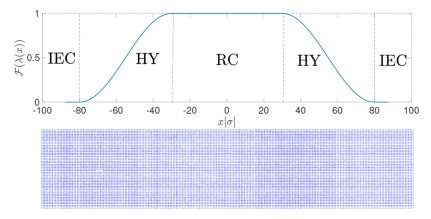Physical properties of solids elucidated by zooming in and out of high resolution

Computer simulations are used to understand the properties of soft matter—such as liquids, polymers and biomolecules like DNA -which are too complicated to be described by equations. They are often too expensive to simulate in full, given the intensive computational power required. Instead, a helpful strategy is to couple an accurate model—applied in the areas of the system that require greater attention—with a simpler, idealised model.
In a recent paper published in EPJ E, Maziar Heidari, from the Max Planck Institute for Polymer Research, Mainz, Germany and colleagues make the accurate model in high-resolution coincide seamlessly with an exactly solvable representation at lower resolution.
The ideal, simpler model is a kind of naked representation of atoms or molecules, which do not interact among themselves. Previous studies have applied this strategy to liquids, but in this study,the authors apply it for the first time to a model solid coupled to an ideal crystal, in which atoms have restricted movements and do not interact, dubbed Einstein crystal. The team were able to compute its thermodynamic properties—e.g. temperature and free energy—at a reduced computational cost.
In this type of simulation, called adaptive resolution simulations, the resolution of a molecule depends on its position in space. In the transition region between the two resolutions, molecules adapt to one model or the other. This is an efficient way of computing the relevant thermodynamic characteristics of the actual solid by decomposing them in an ideal contribution—from the simplified model—and another term, specific to the particular system. The methodology combines the simplicity of ideal models with the chemical accuracy of realistic representations.
More information: Maziar Heidari et al, Concurrent coupling of realistic and ideal models of liquids and solids in Hamiltonian adaptive resolution simulations, The European Physical Journal E (2018). DOI: 10.1140/epje/i2018-11675-x
Journal information: European Physical Journal E
Provided by Springer

















